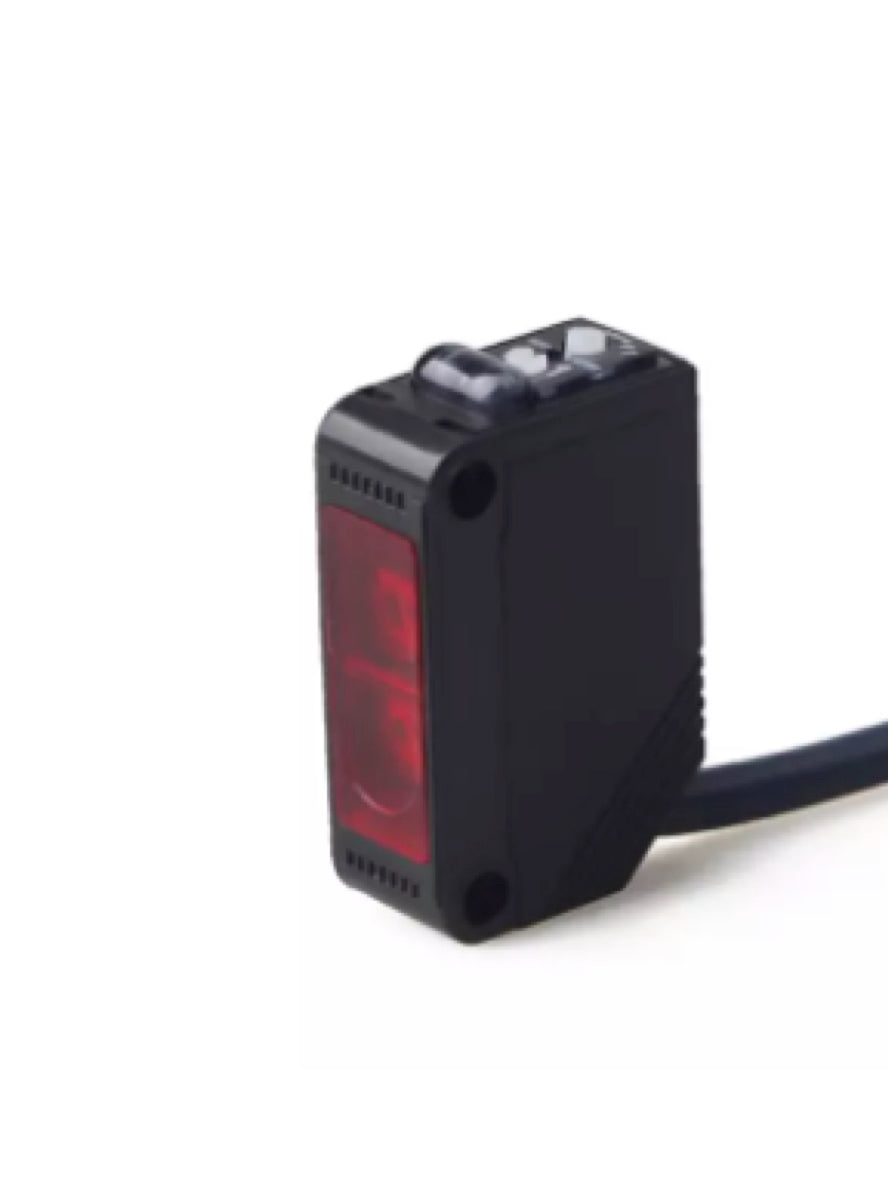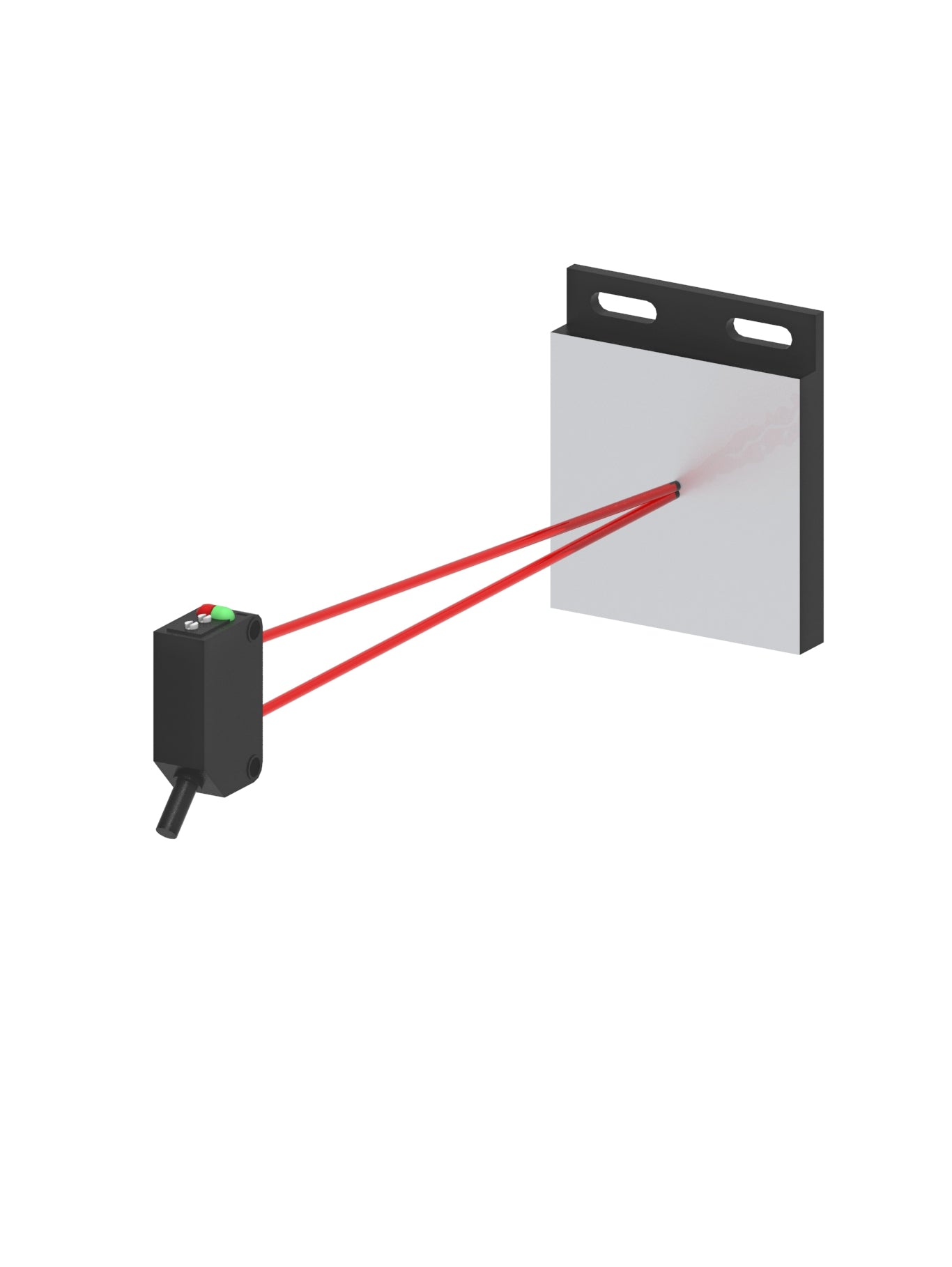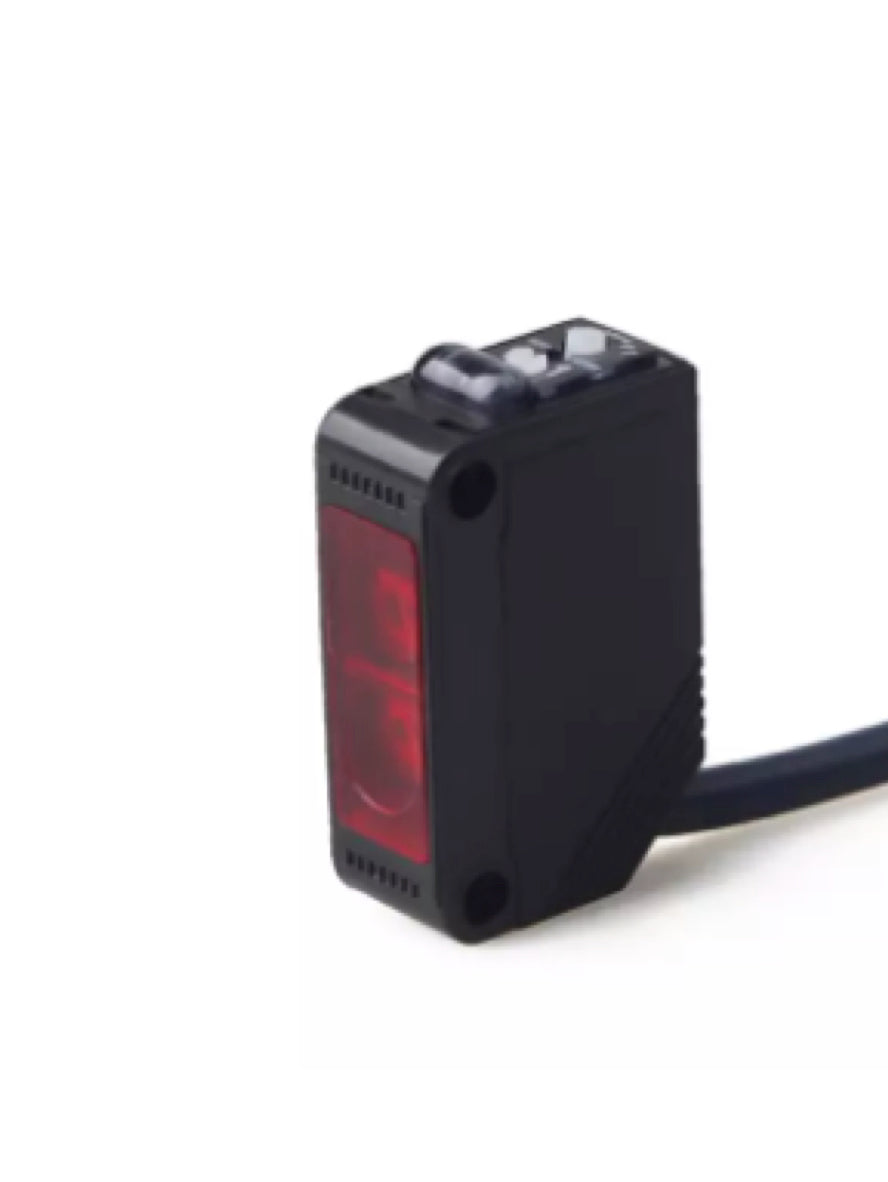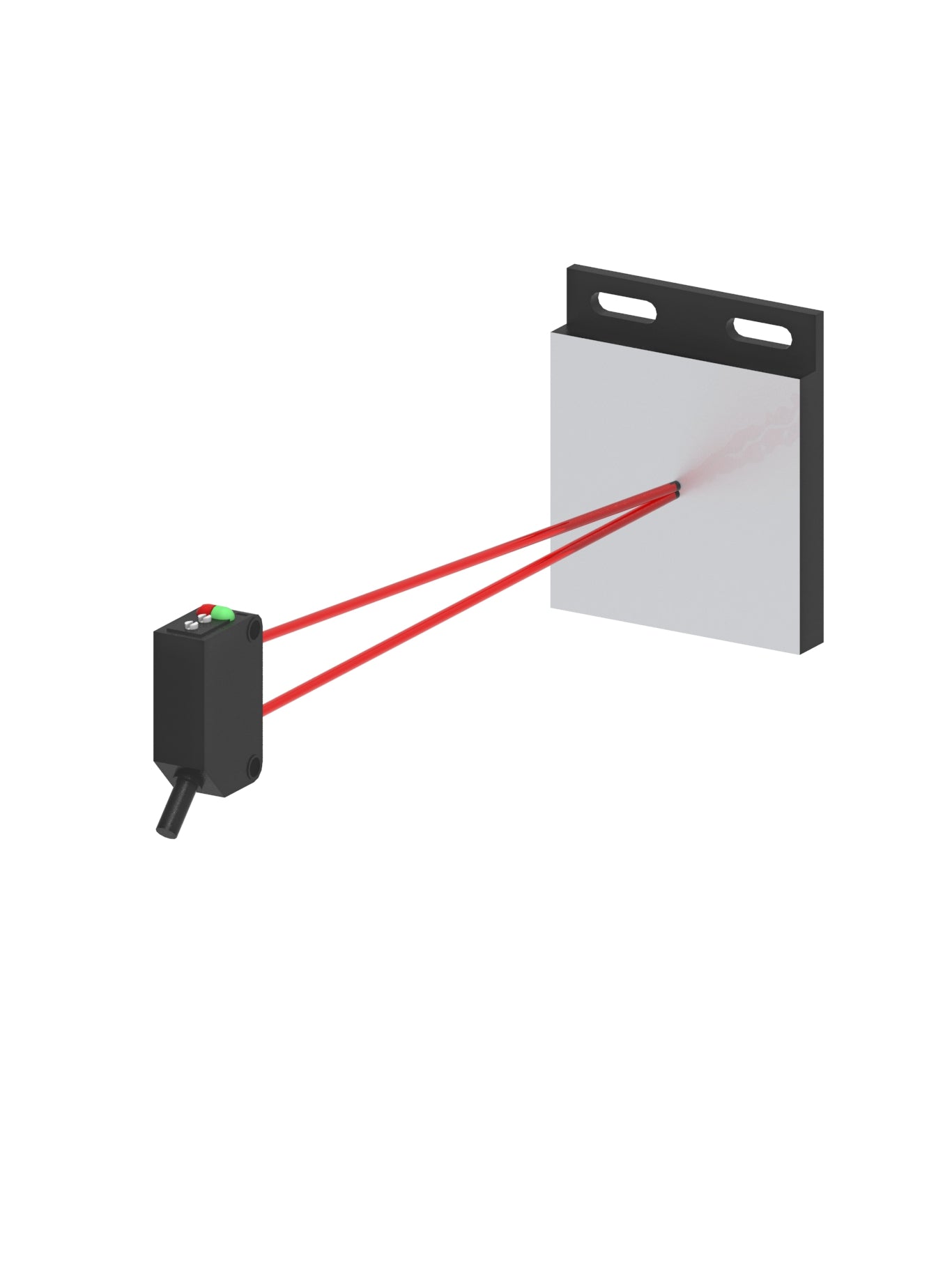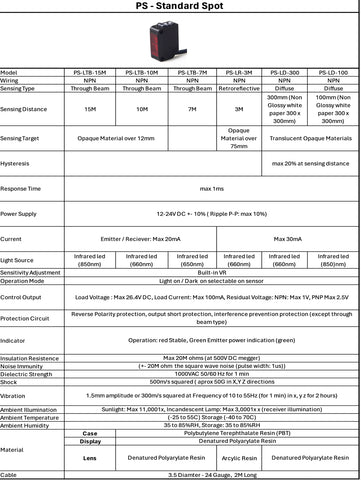Retroreflective Photo Electric Sensor
Retroreflective Photo Electric Sensor
SKU:PS-MR-3M-P
Couldn't load pickup availability
Photo Sensor - Retroreflective
The PS-MR and LR Photo sensors have the emitter and receiver built into a single sensor head. They are powered by 24V DC. A plastic reflector is used to relay the light back from the transmitter to the receiver. When an object blocks the path of light the sensor is triggered. They are Normally Open, which means that the circuit is open until they detect an object.
The size of the beam of light can be specified. For general use, the standard spot would be selected. The larger size makes it possible to detect objects that are somewhat translucent or porous. As long as enough light is blocked, the sensor can detect the object.
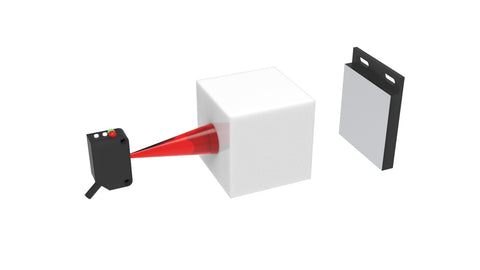
The standard beam sensor is good for larger objects. The large beam would not work as well for smaller objects, since the light could pass around the parts being detected and trigger the receiver.
The PS-MR sensor is designed with a microbeam of light. This makes it perfect for detecting small objects.

For small objects, use the Microbeam sensors. The Micro Beam sensors have a small laser light that makes them easy to position. They can detect smaller objects and can be used for precise object positioning.
The switch can be changed from Dark operation to Light operation with a switch on the top of the sensors. All Sensors come with brackets and reflectors for easy installation.
Choosing a PNP or NPN Sensor
The terms PNP and NPN refer to the type of transistor being used in the sensor. Fortunately, we only need to concern ourselves with how to select a sensor based on the way the sensor will be wired.
Sensors are basically switches that are open or closed based on some condition. This is true for prox switches, photo sensors or any other sensors. Simply put they are all switches that are opened or closed based on whether they detect something or not.
So why would we select a PNP or NPN?
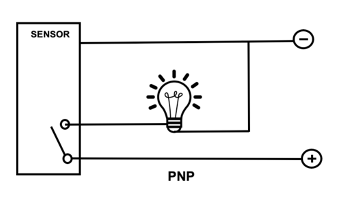
PNP (Sourcing)
If we want the switch to supply the + positive side of the power, we will select a PNP Switch. Remember PNP starts with P and it supplies the + Positive side of the circuit.

NPN (Sinking)
If we want to supply the -Negative side of the circuit, we will select a NPN switch. Remember NPN starts with N and it supplies the negative side of the circuit.

